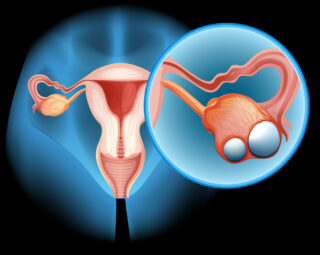
More Cancer Awareness Articles
Ovarian Cancer Prevention

Ovarian cancer is the eighth most common cancer among women and ranks fifth in cancer deaths among women. A woman’s lifetime risk of getting ovarian cancer is about one in 70, or 1.4%.
The Research
Research has found several risk factors that have been shown to increase the risk of a woman developing epithelial ovarian cancer, which accounts for 85-90% of all ovarian cancers.
Age Half of all ovarian cancers are detected in women older than 63 years of age.
Obesity An American Cancer Society study found a higher death rate in obese women.
Reproductive History There may be a relationship between an increasing number of menstrual cycles in a woman’s lifetime and her risk of developing ovarian cancer. This includes onset of menstruation before age 12, childbearing after age 30 or never having any children, and/or menopause after age 50.
Family History With ovarian cancer, breast cancer, or colorectal cancer risk is increased if your mother, sister, or daughter has had ovarian cancer, with a higher risk if the cancer occurred before age 55. About 10% of ovarian cancers have a hereditary tendency, which includes a mutation in the breast cancer gene BRCA1 or BRCA2.
Screenings
Exams and tests meant to detect a disease in patients without symptoms.
There is presently no type of screening method that has proven effective in lowering the number of deaths caused by ovarian cancer.
The most thoroughly studied screening tests are measuring a CA-125 level in the blood or using pelvic ultrasound, but neither is recommended for screening.
CA-125 can be falsely elevated in many benign conditions and is not elevated in all ovarian cancers.
Pelvic ultrasound is helpful in detecting a mass in the ovary, but it cannot accurately determine which masses are cancerous and which are benign.
Signs and Symptoms
- Abdominal swelling or bloating
- Pelvic pressure or abdominal pain
- Difficulty eating or feeling full quickly
- Constipation and Indigestion
- Urinary urgency or frequency
- Back pain and fatigue
- Unexplained weight loss
The best way to detect ovarian cancer early is for both the patient and the physician to have a high index of suspicion if symptoms arise. Although the symptoms associated with ovarian cancer are vague, studies have shown that women with ovarian cancer are symptomatic several months before diagnosis, even with early-stage disease.
Prevention
Some things can be done to lower a woman’s risk of developing ovarian cancer, namely epithelial ovarian cancer.
Use of oral contraceptives for three or more years lowers the risk of developing ovarian cancer by 30-50% compared to women who never used oral contraceptives.
Tubal ligation may decrease the risk of developing ovarian cancer by up to 67%.
Pregnancy and breast feeding.
Several studies have shown that a diet high in vegetables reduced the risk of ovarian cancer.
Prophylactic Oophorectomy For select women at high risk of inherited ovarian cancer, removal of the ovaries after childbearing is an option. However, this does not eliminate the risk of primary peritoneal cancer, which behaves like ovarian cancer.
Other Articles You May Find of Interest...
- Fighting Cancer for All: Why Diversity in Clinical Trials Matters
- Bill Johnson’s Lung Cancer Crusade: Fighting for a Radon-Free Life
- The Revolution of Robotic Surgery In Colorectal Procedures: Smaller Incisions, Faster Recovery
- Ovarian Cancer Prevention
- Wellness Technology From Nature, Light And Frequency
- Cancer: Improving the Odds
- Acupuncture For Side Effects Of Cancer

















